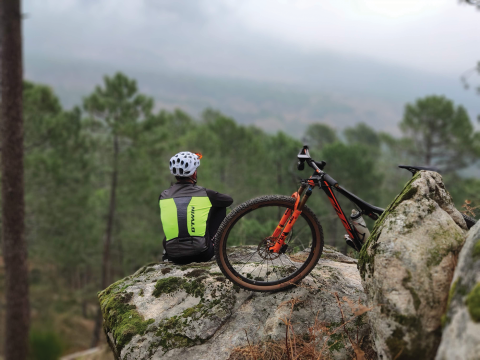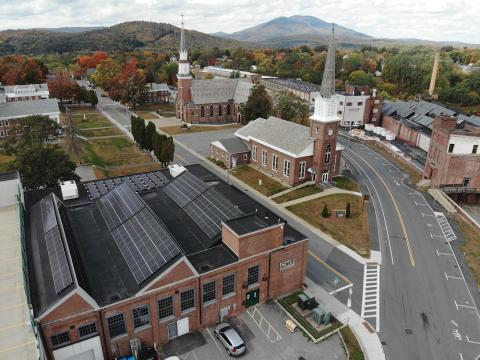Who Says Innovation Can’t Be Rural?

Innovation can be flashy, like the latest smartphone or wireless earbuds. It can be expensive, like a self-driving car or a privately chartered space flight. Marketers love to equate innovation with speed and pizzazz.
But what if innovation was a little more subtle and a lot more stable? That’s what you’re likely to find among the small towns of rural New Hampshire where dependability is as important as change.
UNH Extension Community and Economic Development Program Leader Charlie French explains that there are misperceptions about the characteristics of innovation. Most indexes of innovation are urban-centric because they track venture-capital investment, number of patents, startup job creation and ratio of research and development spending to new sales. Those indicators don’t necessarily reflect the forms of innovation that occur in less populated, rural places where change occurs at a community level or on a regional scale.
“Common attributes of rural places with an innovative ecosystem are that they maintain a proactive local government that is attuned to the needs of local businesses; they maintain an engaged citizenry, have strong social networks, cultivate public-private partnerships, foster a strong system of supports for local businesses and entrepreneurs and harness the creative energy that resides in the people who live there,” he says.
Embracing Heritage While Looking Ahead
In Sullivan County, you can see hallmarks of the past intersecting with entrepreneurship — such as Claremont’s historic Sawtooth mill building, now home to the Claremont Makerspace, a creative hub for the community. Throughout the county, ten covered bridges span smaller brooks and the Sugar River, a key tributary of the Connecticut River, which begins at Lake Sunapee and flows to the Connecticut, passing through nine of the county’s 15 communities. In Sullivan County’s manufacturing heyday, there were more than 100 water wheels on the river.

This is the Sugar River Region, a new destination brand based on UNH Extension Community and Economic Development Field Specialist Penelope Whitman’s work with local stakeholders.
It’s a place that Whitman is helping market by reinvigorating residents’ pride and refining strategies to attract new residents, businesses and visitors.
In partnership with Sullivan County Manager Derek Ferland, Whitman began facilitating the Sullivan County Regional Economic Profile in 2017. Since that time, they’ve engaged stakeholders throughout the region — from longtime residents and realtors to entrepreneurs and local chambers of commerce — in brainstorming sessions about ways to leverage the region’s assets.
Recently, Whitman and Ferland convened 15 local leaders for the Sugar River Region Destination Council to guide the objectives and activities of the initiative. As the development and marketing campaign rolls out, there are plans for a Sugar River Region website, events, enhanced recreational opportunities and accompanying resources to help towns, residents and businesses embrace an identity that has always been quietly present — a distinct and special place with a fascinating history, rich natural resources and a culture of innovation.
Connecting Trail Users with Services
As rural New Hampshire continues to expand its promotion of natural resources and outdoor recreation, the challenge becomes how to make sure the foot traffic on trails leads to purchases in shops.
A new website portal called Trailside Services on Trail Finder aims to help meet this need by connecting businesses and attractions with trail users. As an interactive mapping site, Trail Finder guides New Hampshire and Vermont residents and visitors to hiking, snowshoeing, mountain biking and cross-country skiing trails and paddling routes.
The new Trailside Services portal allows restaurants, hotels, retailers, art centers, food co-ops and more to appear on a searchable interactive map and on pages with details about the services they offer and other important logistical information.
Trail Finder is overseen by UNH Extension in collaboration with the Upper Valley Trails Alliance (UVTA), the Center for Community GIS, the Vermont Department of Forests, Parks and Recreation and the National Park Service Rivers, Trails and Conservation Assistance Program.
Ri Fahnestock, founder and owner of the climbing shoe repair shop New England ReSoul in Newfields, says, “I'm excited to connect my business with trail users by being listed as a Trailside Service on the Trail Finder website. It's valuable exposure to a key market for a small business like mine.”
Cynthia Cutting, director of the Museum of the White Mountains, says, "Making the connection between the hiking experience of our area trails and the Museum of the White Mountains' information, history, images and inspiration will benefit our existing members as well as to introduce us to new audiences."
Creating Alliances, Sharing Research
In addition to creating new tools for connection, UNH Extension State Specialist of Nature Economy Shannon Rogers understands that it’s equally important cultivate relationships across the state. That’s why she serves on the board of directors for the Granite Outdoor Alliance, a membership-based nonprofit for the New Hampshire outdoor industry. Its goal is to bring brands, retailers, nonprofits and individuals together through their shared interest in the emerging outdoor recreation economy while working toward an engaged and inclusive outdoor community.

As Rogers and her Extension colleagues continue to invest in these important partnerships and initiatives, they’re sharing their insights with the public. The team’s research will appear in a forthcoming book to be published by Routledge called “Building Rural Community Resilience Through Innovation and Entrepreneurship.”
The book features expertise of 25 top scholars from around the country and is edited by Extension’s Charlie French, who writes an introductory chapter called “Rural Innovation Defined.” Other chapters by UNH Extension staff include “Nature-Based Economic Development: Innovating at the Intersection of Nature & MainStreet,” by Shannon Rogers, Molly Donovan, Casey Porter and Geoffrey Sewake, and “Building an Entrepreneurial Ecosystem in Rural Communities,” by Jared Reynolds.

